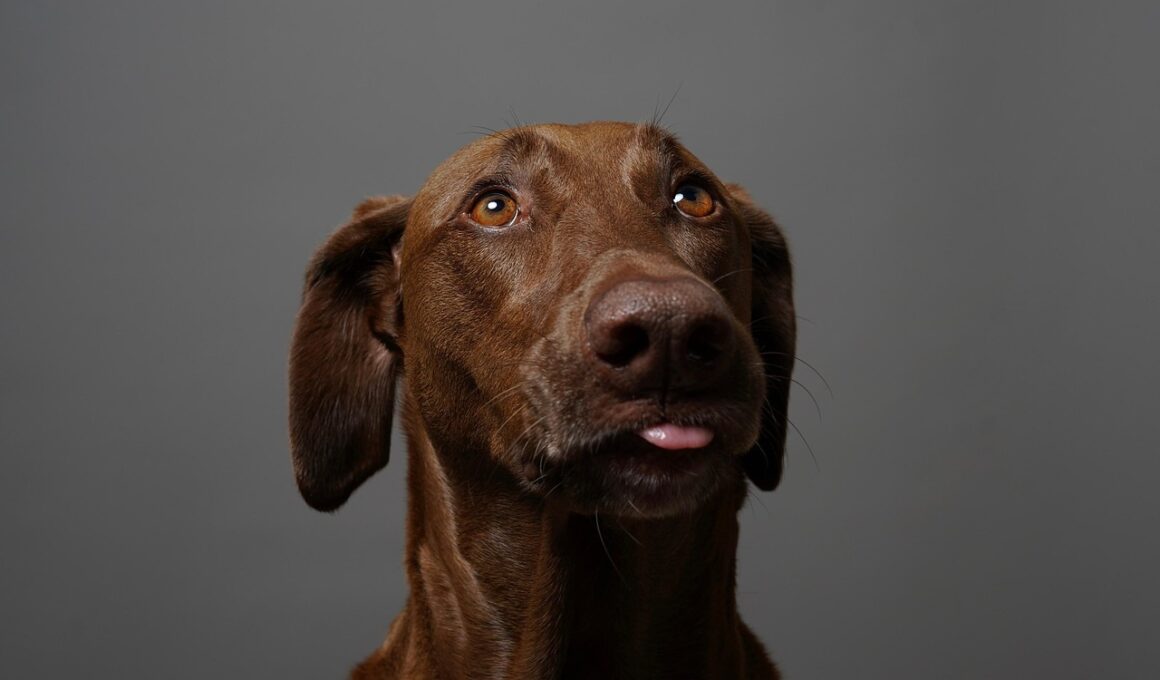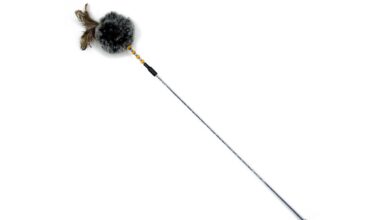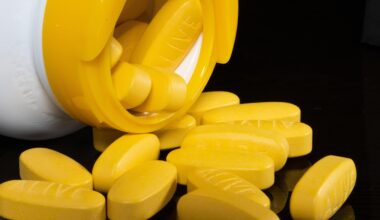Composing the Perfect Indoor Dog Photo: Angles and Perspectives
Indoor dog photography offers a unique charm for pet lovers. Capturing the essence of your furry friend in a familiar environment requires skill and creativity. To achieve stunning indoor shots, focus on angles that showcase your dog’s personality. Try shooting from their eye level to create an engaging perspective. This method fosters a connection, making the viewer feel more involved in the image. Experiment with various angles, including shooting from above, which can provide a distinctive viewpoint. While using overhead shots, ensure the lighting is optimal, as poor lighting can detract from the overall quality. Additionally, consider utilizing natural light from windows, as it can enhance the warmth of the images. Another useful tip involves taking advantage of your dog’s favorite spots around the home. These areas often display familiarity, making your pet appear more relaxed. Capturing candid moments in these settings brings out authentic emotions. Remember to utilize props like toys or blankets to create inviting scenes. Proper composition, along with well-thought-out angles, will elevate your indoor dog photography to new heights, enhancing frame-worthy moments with your beloved companion.
Incorporating natural light effectively is essential for beautiful indoor dog photography. Position your dog near windows or other light sources, as this provides soft illumination. The golden hour, just before sunset, presents ideal conditions for warm, inviting photos. During this time, the sunlight casts a gentle glow that adds depth to your images. Avoid harsh midday sun, which can create unwanted shadows and highlights. If natural light is inadequate, consider investing in softbox lights to mimic daylight. These can create balanced lighting and highlight your dog’s features effectively. Use reflectors to bounce light, filling in shadows and softening hard lines. Experiment with exposure settings on your camera, as adjusting these can enhance image clarity and reduce noise. Always use a lower ISO setting when shooting in bright conditions for the best results. In addition, try various shooting modes on your camera to find what suits your style. Focusing on your dog’s eyes is crucial, as they are often the focal point of any photograph. This technique ensures that the most expressive moments are captured vividly, leading to memorable shots worth displaying.
Understanding your camera settings is paramount for capturing incredible indoor dog photographs. Familiarize yourself with concepts like aperture, shutter speed, and ISO. A wide aperture (lower f-stop number) allows more light into the lens while producing a shallow depth of field. This technique beautifully blurs the background, emphasizing your dog as the main subject. Conversely, if you’re shooting to capture more of the surrounding environment, set a smaller aperture. This adjusts the depth of field, bringing additional elements into focus. Shutter speed is another critical setting to consider, especially with highly energetic dogs that may be moving. A faster shutter speed will freeze action, ensuring no moments are blurred. However, if your dog is calm, a slower setting can create a softer, more artistic shot. Additionally, tweaking your ISO setting allows for more light capture in darker rooms, but balance is key to avoid graininess. Continuous shooting mode can also be beneficial in capturing multiple frames in quick succession. As a result, you’ll have a higher chance of getting that perfect shot of your playful pup, engaging with their environment or posing happily.
Finding Engaging Backdrops
Selecting the right backdrop is crucial for emphasizing your dog in indoor photography. Choose settings that either complement or contrast with your dog’s color and patterns. Neutral backgrounds like white walls or beige carpets can help create a minimalist style while ensuring your dog stands out. Colored walls or textured fabrics can also add depth and interest to the images. If your dog has unique markings, consider contrasting backgrounds that highlight these features. Creative use of household items can also serve as excellent backdrops. For instance, colorful cushions or blankets can add dimensions and aesthetic appeal. Additionally, natural elements like plants or flowers can infuse life into your photography, providing vibrant pops of color. Experimenting with multiple locations around your home can yield wonderful variances in style. Pay attention to distractions in the background that may draw focus away from your subject. By ensuring your backdrop is engaging yet simple, you allow your dog’s personality to come through in spectacular fashion, creating striking portraits that beautifully reflect their uniqueness.
Another significant element in indoor dog photography is positioning your dog effectively. Encouraging your dog to sit or lie down can create calmer scenarios, facilitating better expressions and poses. Use toys or treats to direct their gaze towards the camera, generating curious or playful reactions. This interaction helps to capture vivid expressions, revealing their personalities through photography. Additionally, utilizing their favorite spots, such as a cherished bed or blanket, can make them more comfortable and cooperative during sessions. If your dog enjoys playing, incorporating action shots can result in dynamic and exciting pictures. Capture them mid-leap or running around as this portrays energy and liveliness. Remember to be patient; some dogs may take time to relax and pose naturally. Maintaining a calm demeanor can help ease their nerves, enabling better cooperation. Furthermore, ensure an effective shooting location with minimal distractions to help focus their attention. Gradually increasing the session’s duration helps dogs stay accustomed to the camera. Including elements of play during the shoot can also make the process enjoyable, resulting in spontaneous and genuine captures of your happy companion at home.
Editing Techniques for Dramatic Effect
Post-processing is essential for transforming your indoor dog photographs into stunning visual art. Using software like Adobe Lightroom or Photoshop can enhance the overall finish of your images. Start by adjusting exposure levels to achieve that perfect lighting balance; correcting exposure can significantly improve picture quality. Next, enhancing contrast can provide more depth, especially in images with lots of details. Be cautious when increasing contrast, as too much can overshadow finer details. You can also alter color balance to infuse vibrancy into your shots, creating striking visuals that pop off the screen. Sharpening the images can also refine fine lines around your dog, accentuating their features. Cropping is another vital editing tool to focus on the primary subject. This adjustment can change the image’s narrative, bringing the viewer’s attention to what matters. Furthermore, consider applying filters sparingly to maintain a natural look while adding character. Rather than over-editing, aim for a polished finish. The best photographs blend the beauty of natural moments with subtle enhancements, leaving you with exceptional memories of your indoor dog photography adventures.
Finally, sharing your indoor dog photography journey can inspire and connect with other pet lovers. By showcasing the beautiful images you capture, you can motivate fellow pet owners to explore photography with their own dogs. Social media platforms like Instagram and Pinterest are excellent spaces for sharing your creations. Create dedicated albums or hashtags to consolidate your work, allowing others to find your amazing shots easily. Engaging with communities centered around dog photography can also lead to beneficial feedback and new ideas. Writing blog posts or tutorials about your practices not only demonstrates your knowledge but enriches the community. Consider organizing mini photo sessions with friends and their pets, as this presents an excellent opportunity to practice and improve your skills while having fun. Collaborations can also result in unique portraits that incorporate different styles and techniques, enriching your experiences further. Participating in local dog competitions or events can also provide exposure and create wonderful memories. Ultimately, the joy is in the moments captured and the stories shared, as your passion for indoor dog photography not only showcases stunning visuals but also strengthens the bond with your furry companions.
In summary, indoor dog photography blends art and emotion, allowing pet owners to immortalize cherished moments. By understanding angles, lighting, camera settings, and effective composition techniques, you can produce timeless photographs. Remember to engage with various backdrops and showcase your dog’s personality effectively. Positioning your dog in ways that emphasize their uniqueness brings about candid captures that reflect their spirit. Editing plays a crucial role post-shoot, enhancing images while maintaining natural aesthetics. For those eager to dive deeper, sharing your photography journey builds connections with like-minded enthusiasts and inspires others. Embrace the creative process, and allow the fun of candid moments to shine through your work. As you progress with practice, refining your skills will become increasingly evident through the stunning imagery you create. Indoor dog photography is not just a hobby but a way to celebrate the companionship you share with your dog. Therefore, pick up your camera and start exploring these tips today. Aim for diverse styles and techniques, and let your love for your canine companion guide your lens. Happy shooting!


